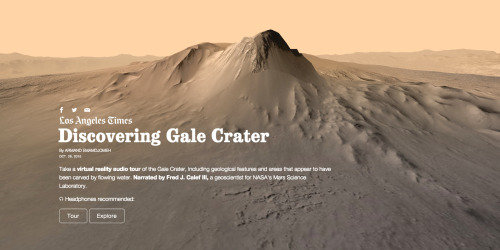The Crown Estate Has Launched A Unique Interactive Map That Shows The Estimated Percentage Of UK Electricity

The Crown Estate has launched a unique interactive map that shows the estimated percentage of UK electricity demand being met by offshore wind on an hourly basis. For the first time, the map draws together a range of publically available data to demonstrate the contribution offshore wind is making to the UK’s low carbon energy mix. The UK now has 27 operational wind farms, with nearly 1500 turbines grown from the first two offshore demonstration turbines deployed in 2000. Although there is variation in output on a daily basis, over the course of 2015 offshore wind is expected to meet an average of around 5% per cent of UK electricity demand.
(via Crown Estate launches interactive offshore wind electricity map - Blue and Green Tomorrow)
More Posts from Dotmpotter and Others
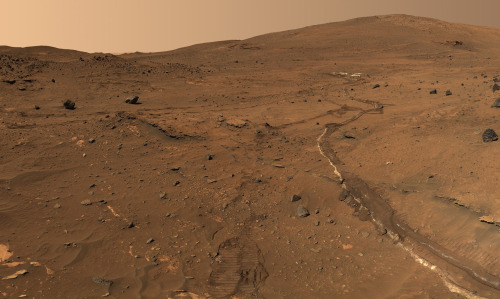



We actually have pictures that great of Mars, a planet about 225 million kilometers (140 million miles) away from us. Image copyright: NASA



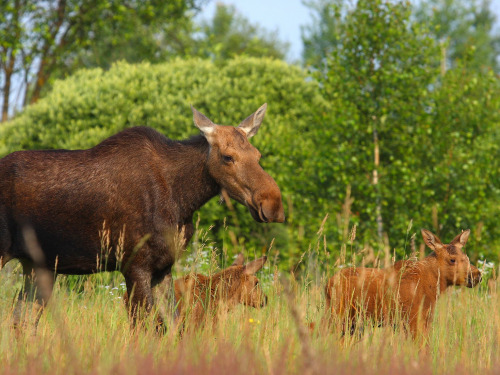
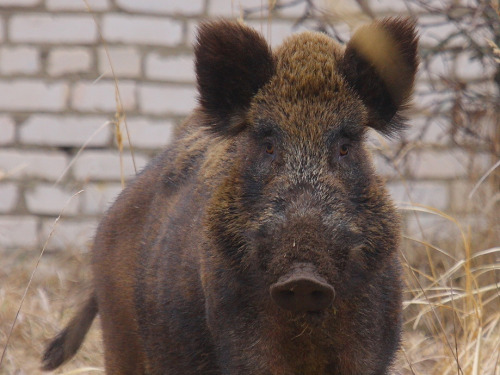

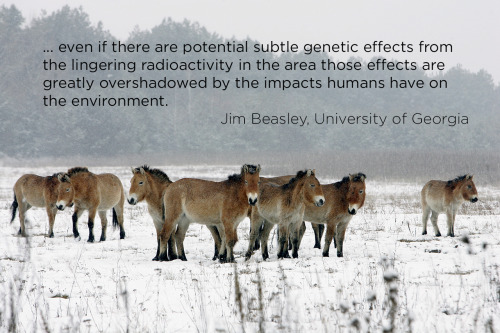
On April 26, 1986, a power surge caused an explosion at the Chernobyl Nuclear Power Plant near Pripyat, Ukraine. A large quantity of radioactive material was released.
On May 2, 1986, the Soviet government established a “Zone of Alienation” or “Exclusion Zone” around Chernobyl – a thousand square miles of “radioactive wasteland.” All humans were evacuated. The town of Pripyat was completely abandoned.
But the animals didn’t leave. And a new study, published this month in Current Biology, suggests they are doing fine. “None of our three hypotheses postulating radiation damage to large mammal populations at Chernobyl were supported by the empirical evidence,” says Jim Beasley, one of the researchers.
In fact, some of the populations have grown. These photos (mostly taken by Valeriy Yurko) come from the Belarusian side of the Exclusion Zone, and area called the Polessye State Radioecological Reserve. Kingfisher, elk, boar, baby spotted eagles, wild ponies, moose, rabbits, and wolves all make their home in the park. In some ways, human presence is worse for wildlife than a nuclear disaster.
Image credits:
1986 Chernobyl - ZUFAROV/AFP/Getty Images
Wildlife photos - Valeriy Yurko/Polessye State Radioecological Reserve
Ponies in winter - SERGEI SUPINSKY/AFP/Getty Images

Algorithm predicts and prevents train delays two hours in advance
Transport apps such as Ototo make it easier than ever for passengers to stay informed about problems with public transport, but real-time information can only help so much — by the time users find out about a delayed service, it is often too late to take an alternative route. Now, Stockholmstag — the company that runs Sweden’s trains — have found a solution in the form of an algorithm called ‘The Commuter Prognosis’, which can predict network delays up to two hours in advance, giving train operators time to issue extra services or provide travelers with adequate warning. READ MORE…
Big Data's religious faith denies the reality of failed promises, privacy Chernobyls

Maciej Ceglowski (previously) spoke to a O'Reilly’s Strata Big Data conference this month about the toxicity of data – the fact that data collected is likely to leak, and that data-leaks resemble nuclear leaks in that even the “dilute” data (metadata or lightly contaminated boiler suits and tools) are still deadly when enough of them leak out (I’ve been using this metaphor since 2008).
Ceglowski also raises a critical point: Big Data has not lived up to its promises, especially in life sciences, where we were promised that deep analysis of data would yield up new science that has spectacularly failed to materialise. What’s more, the factors that confound Big Data in life science are also at play in other domains, including the business domains where so much energy has been expended.
The key point is that people react to manipulation through Big Data: when you optimize a system to get people to behave in ways they don’t want to (to spend more money, to click links they aren’t interested in, etc) then people adapt to your interventions and regress to the mean.
Big Data’s advocates believe that all this can be solved with more Big Data. This requires them to deny the privacy harms from collecting (and, inevitably, leaking) our personal information, and to assert without evidence that they can massage the data so that it can’t be associated with the humans from whom it was extracted.
As Ceglowski puts it, ‘people speak of the “data driven organization” with the same religious fervor as a “Christ-centered life”.’
Read the rest

Bicyclean, a senior thesis project by Rachel Field ‘12, helps recycle e-waste in developing nations by preventing exposure to toxic materials. The project recently won silver at the Acer Incredible Green Contest. Read how Rachel is designing a cleaner future.

A new speech about climate change is fascinating both for what it says and who said it.
Mark Carney, the governor of the Bank of England, declared that the warming climate presented major risks for the global economy and global financial stability, and that businesses and regulators needed to move more quickly to try to contain the potential economic damage even though it may seem uncertain and far off.
His warning, delivered in a 4,400-word speech with ample footnotes on Tuesday, is the latest example of how climate change has moved beyond theoretical scientific debates to the start of practical planning for safeguarding the economy and business.
“We don’t need an army of actuaries to tell us that the catastrophic impacts of climate change will be felt beyond the traditional horizons of most actors — imposing a cost on future generations that the current generation has no direct incentive to fix,” he said. “In other words, once climate change becomes a defining issue for financial stability, it may already be too late.”
Mr. Carney calls the economic challenges around climate the “tragedy of the horizon,” in contrast to the long-noted economic phenomenon of the “tragedy of the commons.” That is, the costs of a warming climate come on a time scale and with an uncertainty that go beyond the usual multiyear business cycle, beyond political cycles of presidential and parliamentary elections, or as he puts it, beyond “the horizon of technocratic authorities, like central banks, who are bound by their mandates.”
It might seem odd for a central banker to be talking about a long-term problem of global climate, all the more so when the global economy is looking rather shaky. After all, the job is typically to worry about price inflation and the banking system.
But if you back up and define a central banker’s job a little more broadly — to worrying about the economy and the stability of the financial system writ large — it quickly becomes clear why climate matters.
Good read from NYTimes.

The PBL Climate Pledge INDC tool tracks the emission reduction proposals and policies that countries are submitting in the run-up to the Paris Climate Summit. Updated each time new countries submit their proposals, the tool gives up-to-date information on the effects of these proposals on the projected emissions of greenhouse gases. Data via PBL.

From Hawaii’s flurry of hurricanes, to record high sea ice in Antarctica, and a heat wave that cooked the Australian Open like shrimp on a barbie, 2014 saw some wild weather. How much of that was tied to climate change is what scientists around the world tried to answer in the Bulletin of the American Meteorological Society’s annual attribution report, which was published Thursday.
What they discovered was that the clearest impacts of warming could be found in heat-related events, from heat waves on land to unusually hot ocean waters. Other events, like droughts in East Africa and the Middle East, California’s intense wildfires, and winter storms that continually swept across the eastern U.S., were harder to pinpoint. In part this is because such events are inherently complex, with a multitude of factors influencing them.
For example, while the East African drought was found to be both more likely and more intense because of warming, the situation in the Middle East was less clear, with no discernable climate change connection to the various factors that influenced it. Likewise, no direct push from climate change could be found in California’s wildfire activity, though it is clear that it is increasing the overall wildfire risk there.
And while some events, like the U.S. winter storms and the record high Antarctic sea ice extent, could be pinned to a particular cause, that cause could not be linked to climate change. For other events, like the drought in Brazil and flooding in the Canadian prairies, humans influenced the likelihood in other ways besides the greenhouse gases that continue to be emitted into the atmosphere.
What was clear, though, is that the fast-growing field of what is called extreme event attribution is gaining momentum. Researchers are casting a wider net for extreme events to examine and continually refining their methods. Attribution work has traveled a considerable distance since its inception just over a decade ago.
“Extreme event attribution” is a new topic for me. Very cool science right thar.



Earthprints: Aletsch Glacier
One of Europe’s biggest glaciers, the Great Aletsch, coils 14 miles through the Swiss Alps - and yet this mighty river of ice could almost vanish in the lifetimes of people born today because of climate change. The glacier, 900 meters (2,950 feet) thick at one point, has retreated about 3 km (1.9 miles) since 1870 and that pace is quickening, as with many other glaciers around the globe.
That is feeding more water into the oceans and raising world sea levels. It was only after I got down onto the ice, with spikes on my boots for grip and often roped to my guide for safety, that I appreciated the full scale of the glacier, on the south side of the Jungfraujoch railway station.
And yet even the Great Aletsch glacier, the biggest in the Alps and visible from space, is under threat from the build-up of greenhouse gases in the atmosphere from factories, power plants and cars that are blamed for global warming. (REUTERS) Photography by Denis Balibouse/REUTERS Read: Vast Alpine glacier could almost vanish by 2100 due to warming See more photos of the Great Aletsch and our other slideshows on Yahoo News.
-
 dotmpotter reblogged this · 9 years ago
dotmpotter reblogged this · 9 years ago -
 urbanoceanix reblogged this · 9 years ago
urbanoceanix reblogged this · 9 years ago
